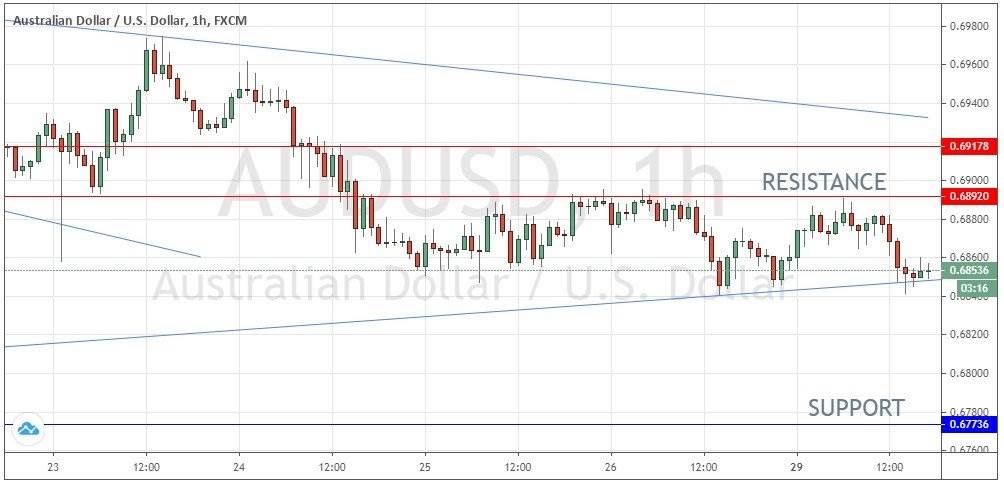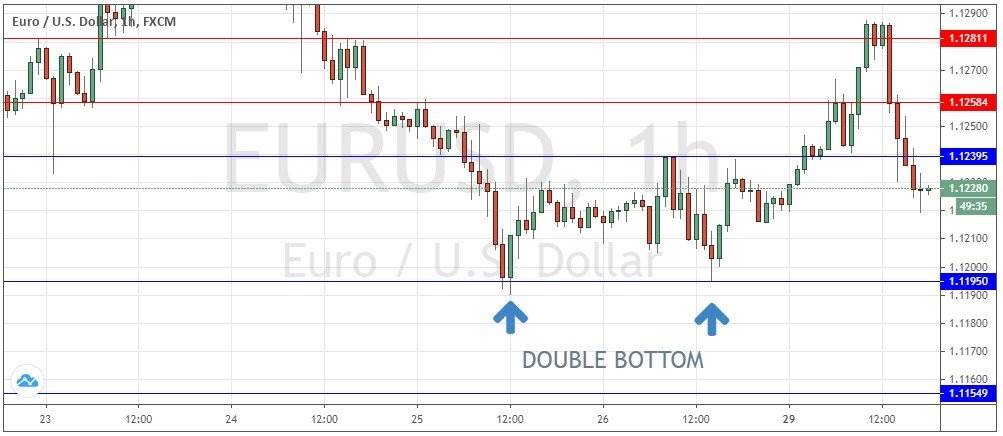Top Forex Brokers
Why are Trade Exits so Difficult?
There are two main reasons why trade exit strategies are so difficult.
The first reason is because many people think of them as the same as trade entries, just in reverse. The logic here is that a good long entry is the same as a good exit from a short trade. This is not really true, because we are usually looking for different things in our trade entries than we are in our exit.
For example, say you have entered a trade because of a candlestick formation that you believe have some predictive power. The entry is successful, and the price goes in your desired direction for the next five candles. You then see the same formation happen but signaling a short entry. Is it correct to exit the trade now?
“The answer as to what is right for you depends upon whether you are aiming for profit from short-term movements or longer-term moves, or both.”
There is no right or wrong answer here that fits every trader, for the simple reason that you really have no idea whether the price will now reverse and hit your entry or stop loss or will instead pull back a little before continuing in your desired direction by another two thousand pips.

The answer as to what is right for you depends upon whether you are aiming for profit from short-term movements or longer-term moves, or both. You have to answer this question yourself before you know what exit strategy is right for you. If you think you can win 60% of your trades and compound your risk to make a great return, it makes sense to be ready to take profits quickly. If you prefer the statistically easier but psychologically more challenging goal of winning only a few of your trades but making big profits from those winners, it makes more sense to be very patient before exiting trades. Of course, you can combine both outlooks, and look to take partial profits early and leave the remainder on the table hoping for a big winner.
Now let’s turn to some good take profit and stop loss methods you can apply. These are all the methods you really need to worry about.
Take Profit and Stop Loss Methods
Fixed Reward to Risk Exit Targets
With this method, the distance from the trade entry to the stop loss represents 1 unit of risk. Here you set a take profit based upon a multiple of that unit. For example, if you want 2:1, and your stop loss is 100 pips, you set a profit target of 200 pips.
Advantages: it is easy and can remove stress. If the pair is trending, you can aim for a high ratio. You can also have several targets. If you are using a decent entry method and trading the hot currency pairs, and you use fairly high ratios of at least 3:1, you are giving yourself a good chance to achieve a profit.
Disadvantages: this method can be too rigid, as it takes no notice of how the market performs after entry. You might miss a target by just a few pips and end up losing the trade.
Time-Based Exits
This trade exit strategy is often overlooked. You simply decide you will exit any trade still open after a certain period of time. Back tests have shown this method to be surprisingly profitable, with the optimal period in Forex tending to be about eight trading days. This has the same advantages and disadvantages of the previous method outlined above.
Reward to Risk & Time Combination Exit
You could combine the two methods discussed above by deciding for example to exit a trade at a particular future point in time if the reward target has reached at least a certain minimum.
Trailing Stop Loss
By trailing stop loss, I mean either a real trailing stop loss which is set at a certain proportion or pip amount, or any method that moves up the stop loss so you exit ultimately by being stopped out. Of these methods, either moving up the stop to be just below recent swing lows or chandelier trailing stops tend to get the best results.
These methods have the advantage of ensuring exits are based upon how the market performs. If you get a really strong move, these methods keep you in the trade for longer and help to maximize profit. The major disadvantage of these methods is that they might give up too much profit, especially if used incorrectly.
Support & Resistance
You could pick profit targets in advance based upon key strong support and resistance levels that you identify on longer-term charts, and trade targets at these levels. The disadvantage with this approach is that these levels can be very unpredictable and whether they hold or not depends a lot upon what is happening with market sentiment and news. A better approach is to know where these levels are and keep them in mind for areas where it might be wise to exit if the price starts to turn around.

Trend Line Break
If your trade is in the direction of a clearly defined trend in which an obvious and unambiguous trend line can be drawn, a clear break of the trend line could be a good exit signal.
Double Top or Bottom
A more advanced trade exit strategy that takes practice to master but which also tends to get good results while giving up relatively little profit, is to wait for a major high to be made (in a long trade), followed by a pullback, and then a failed attempt to break that high. This requires good judgement but can be a great way of getting out of a trade with as much profit as possible.
The hardest part of this method is to know how to call the major highs and lows, and the failed retests. As a general rule, the longer the price takes to fail, the more decisive the failure is.
There are three types of double top or bottom:
- Classic, where the tops are roughly equal.
- Lower, where in a series of highs the first lower high is made, or the first higher low in a series of lows.
- 2b Breakout, where a slightly higher price is actually made which then fails quickly.

Long-Term Technical Analysis
If you are making trade entries on shorter time frames, you might decide to be more optimistic and let winning trades run for longer based currencies that are trending strongly over the previous few months.
Linear Regression Channel
This linear regression indicator is available on most trading platforms. It can be the perfect tool for exiting trend trades. You draw the channel which will encompass the candlesticks representing the movement you are trading, from the obvious low where the movement started, and keep extending it as the trade progresses through time over all the new candlesticks which appear on the charts, but you should not draw it until the trade moves into a significant amount of profit (typically, at least as much as the risk in terms of pips). Then, you keep moving up the stop loss to just below the lower edge of the channel. This can give you the best of both worlds – getting you out of the trade when it looks like it is going bad, but keeping you in as long as it is broadly going in the right direction.
Fundamental Analysis
Fundamental analysis is not very good at telling you how to trade, but it can be useful in telling you which currency pairs might be more likely to move by many hundreds or even a few thousand pips over the coming weeks or months. Look not only at economic data but most importantly what the central banks in question are saying in their monthly statements, regarding whether they are seeing tighter or looser monetary policies as likely. Interest rates also have a small bearing, in that currencies with higher interest rates are slightly more likely to rise over the coming weeks than currencies with relatively low rates.
When to Take Profits in Forex
One of the most difficult questions that a trader will ask themselves is when to take profits. This is a very complex issue, and as such has no one correct answer. The correct way for you to take profits will be different than someone else. It comes down to your trading style and timeframe much of the time.
One very popular way to take profit in a successful trade is to put an order in to close a position when the next support or resistance level is reached. This is one of the easiest ones to do, as long as you understand support resistance. The theory on this of course is the value will be able to avoid any whipsaw that the Forex market may produce as it undulates along its course.
Moving average crossovers also serve as take profit signals for some traders. This tends to be a favorite of the longer-term trader, as it is a trend-following system. This approach allows for large areas for the Forex market to move around in, allowing you to stay in the trade for much longer periods of time. Depending on the timeframe that you are using, this can be months or even years believe it or not.
Candlestick recognition is another form of technical analysis that will allow you to take profits at specific points. This is normally used in concert with support and resistance, as the two disciplines work very well with each other. For example, if you are long a particular currency pair and you spot a shooting star, this is a signal that the trade may start to work against you. If you marry this with a serious resistance area, this gives you two very strong reasons to consider exiting the trade. Conversely, if you are short a currency pair and see a hammer candlestick, this could be a trade that is about the work against you. This is especially true if support is to be found in the same area.
Another common and an extremely simple way to take profit is to simply close the trade out at the end of the trading day. Day traders do this every day, so that they can sleep at night without the worry of the trade working against them.
Final Thoughts
As you can see, there are several different ways to take profits when you are trading Forex. It is going to come down to a lot of different reasons, including things such as time frame, but also other things such as Forex trading psychology. One of the best ways to determine the optimal exit strategy is to pay attention to your emotions when you try different strategies. The one that you feel the most comfortable with, will typically be the best. This is because you will be much more able to follow it and profit from it.
FAQs
When should you exit a trade?
You should exit a trade when your exit strategy tells you to. It is extremely important to be consistent with trade exits and be disciplined enough to keep following the same strategy even if you use some individual discretion in making the decision.
When can I exit forex trading?
There are many different strategies you can use to tell you when to exit your trades in Forex trading. Using trailing stops or time-based exits are two good and popular exit strategies.
When can you enter and exit day trading?
Trade entries and trade exits should be generated by two different trading strategies when day trading. As day trading is very challenging, an element of individual discretion based on experience is also helpful in picking profitable entries and exits.
What is a good exit indicator?
One of the best exit indicators is the relative strength index (RSI). You can use it to exit a short trade when the indicator goes above 50 or to exit a long trade when the indicator goes below 50.
